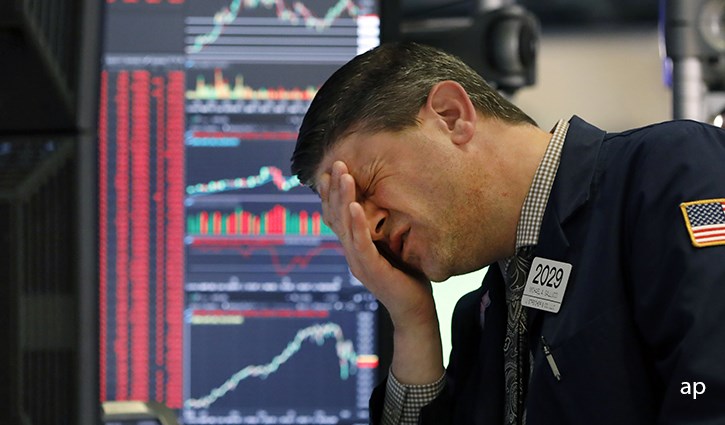Michael Keaveney: With this year's continuing downturn in global equity and fixed-income markets, it's time, once again, to remind ourselves that volatility is a feature of long-term investing. In this illustration, we tally the number of 10% drops in the S&P 500 over the course of each year since 1980.
While the number of pullbacks may change each year, the markets don't go too long without reversing course temporarily. We're not yet through 2022, and it's already shaping up to tally an outsized number of such drops. Worse still, this year has paired drops in the equity market with a steep downturn in the bond market, adding to investor worries.
Using the bellwether U.S. markets to illustrate once again, and this time focusing on annual total return, we can see that calendar year equity returns, shown in blue, are negative from time to time. Bond market turns shown in red can also be negative, but less frequently. Having these markets go negative at the same time, which we are currently experiencing, is rare and potentially panic-inducing. In volatile times, it's understandable that investors might rethink whether they want to continue to put their assets at risk, but we believe there is a potential cost to decisions made in the moment that is born out over the long term.
Investor resolve has been tested many times through history. For example, at the low point of the Global Financial Crisis in about March 2009, investors in the U.S. equity market could have chosen to make the difficult decision to remain invested, and their future path could have looked much like the blue line. By contrast, it's easy to imagine an equity investor at the same point in time making a permanent decision to exit their investments and remain in the perceived safety of cash. This is illustrated by the flat line at the bottom.
But there's also the very interesting scenario of a seemingly reasonable decision to go to cash for a year and wait out the bad news and doom and gloom, and then reinvest when times are perceived as better. Of course, times perceived as better probably translates to after the markets have recovered. At the depths of the Global Financial Crisis, this would have been illustrated by the red line, and the potential cost of that decision over the intervening years to current times is shown by the gap between the blue line and the red line. That decision to sit out a year and effectively miss out on the subsequent recovery had a profound negative effect on long-term success.
So, let's agree that while it's understandable to think something like the market is going down right now, I'll get out and come back when things look better, for a long-term investor, the effects of acting on that thought can look a lot like the red line. The missed opportunity of participating in the rebound has potentially big consequences for final wealth versus a holding strategy.
For Morningstar Investment Management, I'm Michael Keaveney.



















